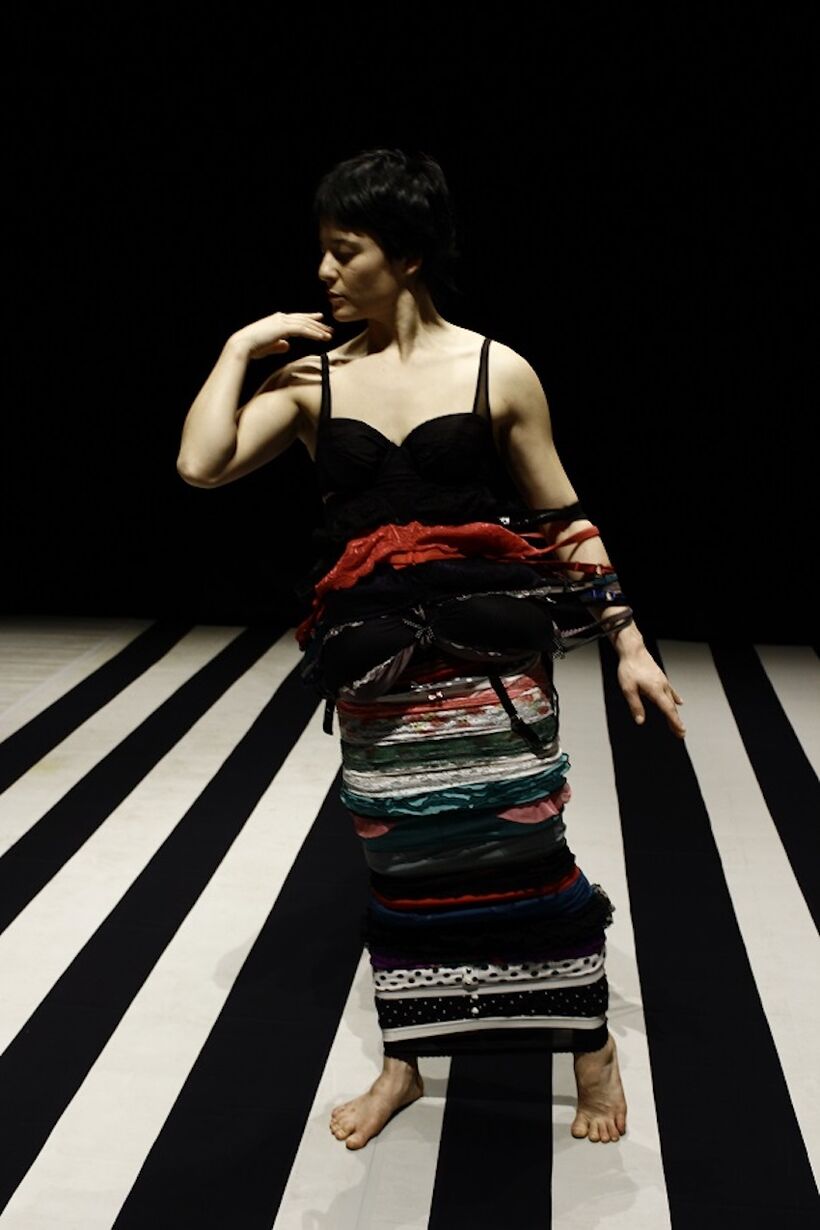UN/DRESS | moving painting … of Powerful Female Body Presence
In her piece UN/DRESS | moving painting, dancer and choreographer Masako Matsushita takes the viewer on a conscious journey of female bodily presence in a social context. Addressing the issue of femininity and its role in society today, she creates a dynamic exploration of the physical self in space. The stage, as a static environment, develops into a moving picture through monotonous, slow body movements, creating a strong presence.
Matsushita has a compelling approach to performance creation, colliding visual structures and a physical body as something statically moving. This dynamic creates a powerful feeling of being here and now. And it becomes even more forceful when reflecting the issue of the female body.
Through a dressing or undressing of feminine underwear, Matsushita unfolds even more hidden patterns of female body representation, attributes, and roles. ‘Un/dressing’ happens in a natural yet disturbing way – accompanied by unvaried body movements – that adds the feeling of being out of time or space. And still there are blue fabric stripes take us back to the frame, structure, and precision.
Through gradual body movement and its trajectory, the dancer reflects on the more or less linear narrative of conscious journey. The scenes – from dressing to undressing, and putting these material symbols on top of the head – reflect on exploring every phase of relation between the physical body’s role in social structures, together with its clichés and absurdities. A soft destruction of stripes and coming-out of the frame follows, connecting the body with nature, and maybe its evolutionary associations embodied in the human genome.
Sound, dimmed lights, and shadows together create sometimes dramatic, sometimes sarcastic scenes. Occasionally, when the ‘moving picture’ stops moving, the static body, like a statue, expresses aspects that are beyond the modern social models, or have a cause-and-effect relationship to it.
This visual-driven performance – with the body constantly shifting from present to absent – keeps the spectator focused and conscious, presumably rethinking the roles of the female body in social context.
Review written during the workshop Writing about dance (in the Times of Corona), organised by Dance and Performing Arts Criticism in Europe, supported by EEA Grants 2014-2021.
UN/DRESS | moving painting
Choreography, dance: Masako Matsushita
Music: Federico Moschetti
Light design: Maria Virzì
Production assistant: Paolo Paggi




